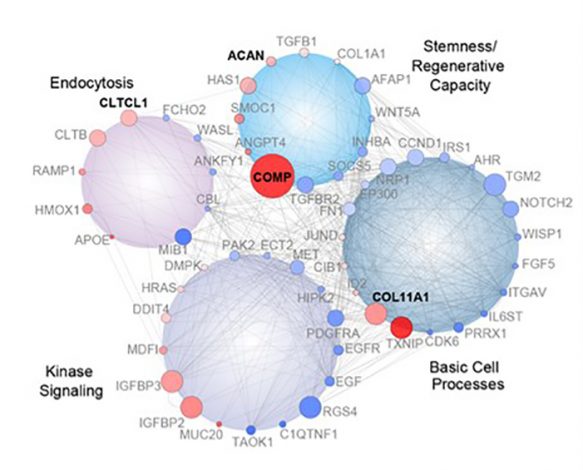Nanosilicates can create bone from stem cells without growth factors

Image: Texas A&M Engineering
Researchers at Texas A&M University are exploring a new class of clay nanoparticles that can direct stem cells to become bone or cartilage cells.
Akhilesh Gaharwar, an assistant professor in the Department of Biomedical Engineering, and his students have demonstrated that a specific type of two-dimensional nanoparticles, also known as nanosilicates, can grow bone and cartilage tissue from stem cells in the absence of growth factors. These nanoparticles are similar to flaxseed in shape, but 10 million times smaller in size. Their work was published recently in Proceedings of the National Academy of Sciences.
The National Institute of Biomedical Imaging and Bioengineering provided funding.
Two-dimensional nanomaterials have gained increasing popularity over a variety of fields, such as energy, optics and regenerative engineering, due to their extremely small size and unique shape. These nanoparticles consist of highly organized atomic layers made from minerals. The minerals are abundantly present within the human body and help in some vital functions.
“To understand how these nanoparticles interact with stem cells, we utilized a next-generation sequencing technique called RNA-seq,” said Irtisha Singh, a computational biologist from Weill Cornell Medicine at Cornell University and the corresponding author. “RNA-seq takes a snapshot of gene activity of the cell at any given moment. This is similar to taking a high-resolution photo during the Super Bowl and identifying the reaction of every fan during the touchdown.”
RNA-seq uses next-generation sequencing to reveal the presence and quantity of RNA in a biological sample at a given moment. For example, cell-nanoparticle interactions can result in significant change in cellular behavior that can be observed by using this technique.
“This technique is very sensitive to investigate the interaction of a wide variety of nanomaterials with cells,” said Jake Carrow, a doctoral candidate in Gaharwar’s lab and co-first author of the study. “With this combination of nanotechnology and computational biology, we can better understand how a material’s chemistry, shape and size can contribute to cell functions.”

